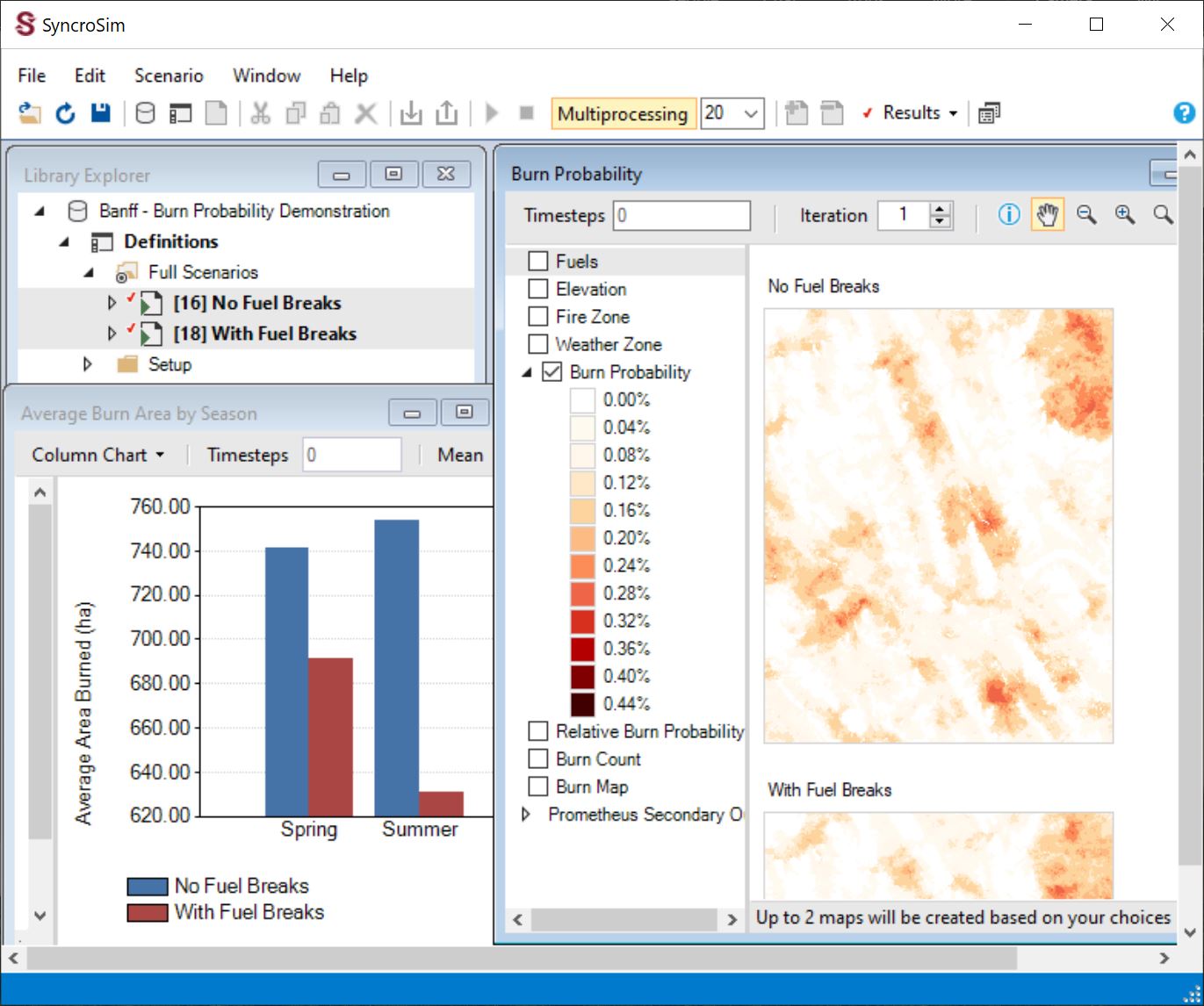Project: A general software framework for burn probability modeling in Canada
Project:
A general software framework for burn probability modeling in Canada
Project Overview
Land management agencies use burn probability modeling to understand the spatial pattern of wildfire risk across a landscape, including forecasting how that risk might change under alternative “what-if” scenarios of future climate, vegetation change, fire suppression and fuel treatments.
In collaboration with the Canadian Forest Service, ApexRMS has developed BurnP3+, a new open-source SyncroSim Package for simulation-based burn probability modeling. BurnP3+ was designed to update and replace the original Burn-P3 model, a widely used application developed by the Canadian Forest Service dating back to 2005 (Parisien et al. 2005). As with the original Burn-P3, at the core of BurnP3+ is a deterministic fire growth model that forecasts the spread of an individual fire from a single ignition location, based on spatial data provided for forest fuels, topography and weather. BurnP3+ estimates the burn probability of each spatial cell across a landscape by running this fire growth model thousands of times across the landscape, each time stochastically sampling ignition locations and other inputs, and then tallying up the results of these Monte Carlo simulations. While BurnP3+ supports the inclusion of any number fire growth models, at present it includes two models, Prometheus and Cell2Fire, both based on the Canadian Fire Behavior Prediction System.
As a result of developing BurnP3+ as a SyncroSim Package, a number of new features are available to users of the model, including:
- the ability to easily compare and contrast alternative “what-if” scenarios, including the ability to assess the sensitivity of forecasts to alternative fire growth models;
- flexibility in how modeling workflows are developed, including the ability to embed the model in scripts written in languages such as Python and R;
- improved support for large landscape simulations, including built-in support for multiprocessing and Linux-based High-Performance Computing;
- the ability to dynamically connect fire growth models to models of landscape change (such as ST-Sim).

Client: Canadian Forest Service
Year: 2021 - present
Focus Areas: Landscape Change (Wildfire)
Project Overview
Land management agencies use burn probability modeling to understand the spatial pattern of wildfire risk across a landscape, including forecasting how that risk might change under alternative “what-if” scenarios of future climate, vegetation change, fire suppression and fuel treatments.
In collaboration with the Canadian Forest Service, ApexRMS has developed BurnP3+, a new open-source SyncroSim Package for simulation-based burn probability modeling. BurnP3+ was designed to update and replace the original Burn-P3 model, a widely used application developed by the Canadian Forest Service dating back to 2005 (Parisien et al. 2005). As with the original Burn-P3, at the core of BurnP3+ is a deterministic fire growth model that forecasts the spread of an individual fire from a single ignition location, based on spatial data provided for forest fuels, topography and weather. BurnP3+ estimates the burn probability of each spatial cell across a landscape by running this fire growth model thousands of times across the landscape, each time stochastically sampling ignition locations and other inputs, and then tallying up the results of these Monte Carlo simulations. While BurnP3+ supports the inclusion of any number fire growth models, at present it includes two models, Prometheus and Cell2Fire, both based on the Canadian Fire Behavior Prediction System.
As a result of developing BurnP3+ as a SyncroSim Package, a number of new features are available to users of the model, including:
- the ability to easily compare and contrast alternative “what-if” scenarios, including the ability to assess the sensitivity of forecasts to alternative fire growth models;
- flexibility in how modeling workflows are developed, including the ability to embed the model in scripts written in languages such as Python and R;
- improved support for large landscape simulations, including built-in support for multiprocessing and Linux-based High-Performance Computing;
- the ability to dynamically connect fire growth models to models of landscape change (such as ST-Sim).

